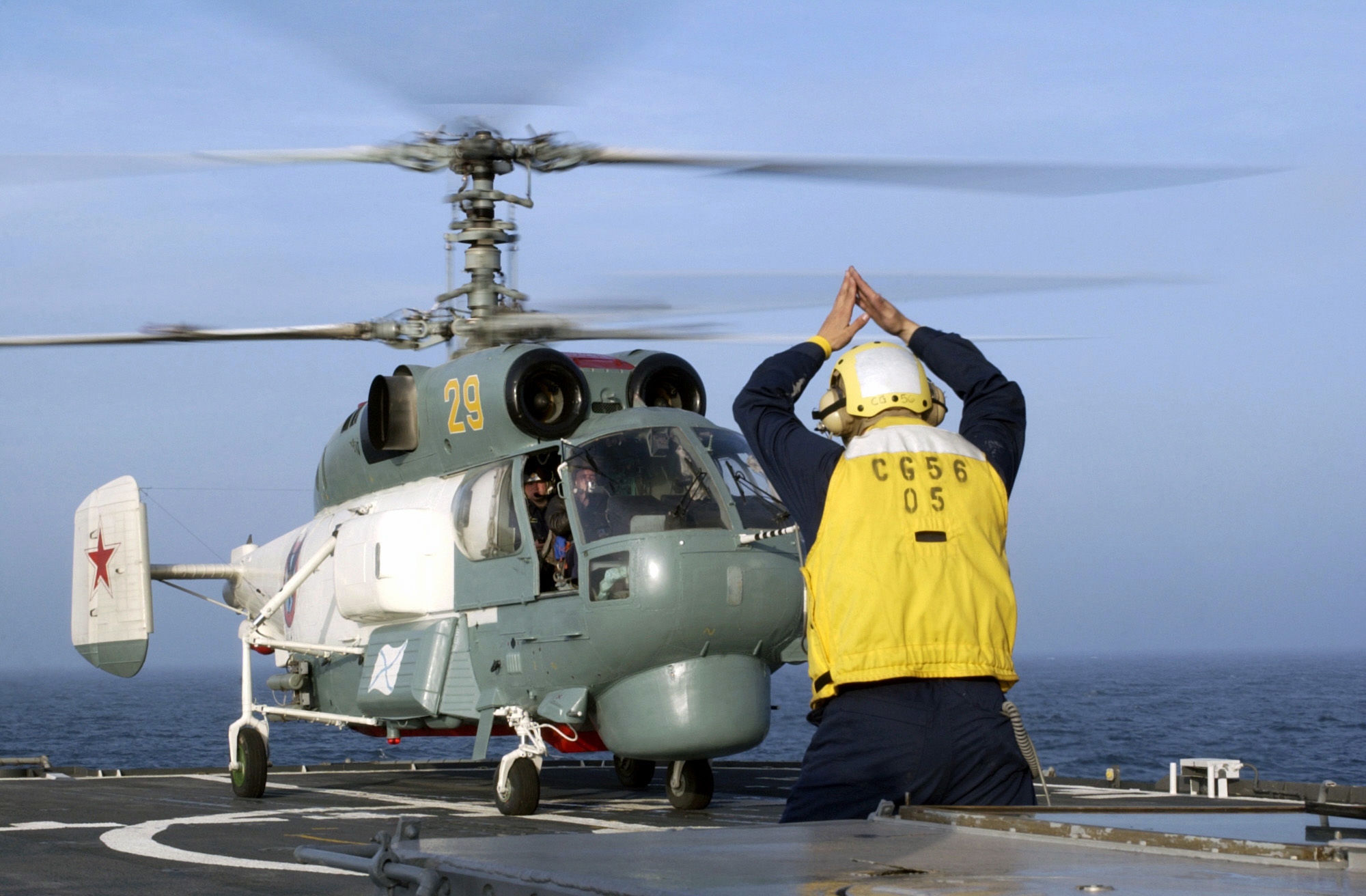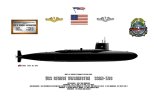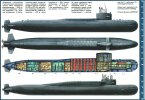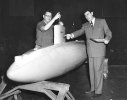widespread Helix has no such system.
What a strange helicopter design. I've always thought it was kind of cool with the contra-rotating blades and quad-wheel undercarriage.
The various design bureaus came up with some interesting designs.
widespread Helix has no such system.
What I always find interesting from the Cold War is that if you look at designs from USA and USSR at the same time you can see that there are a lot of parallels in concepts that are explored and the divergence doesn't come until it's time to bend metal. For instance, the SU-25 is very similar to the A-9 that lost out to the A-10. You can see that the two disparate design teams came up with many similar paper designs and for whatever reason (culture, doctrine, etc) took different paths.What a strange helicopter design. I've always thought it was kind of cool with the contra-rotating blades and quad-wheel undercarriage.

The various design bureaus came up with some interesting designs.
Too true. Here is our Huskie...see anything familiar?What I always find interesting from the Cold War is that if you look at designs from USA and USSR at the same time you can see that there are a lot of parallels in concepts that are explored and the divergence doesn't come until it's time to bend metal. For instance, the SU-25 is very similar to the A-9 that lost out to the A-10. You can see that the two disparate design teams came up with many similar paper designs and for whatever reason (culture, doctrine, etc) took different paths.

What I always find interesting from the Cold War is that if you look at designs from USA and USSR at the same time you can see that there are a lot of parallels in concepts that are explored and the divergence doesn't come until it's time to bend metal. For instance, the SU-25 is very similar to the A-9 that lost out to the A-10. You can see that the two disparate design teams came up with many similar paper designs and for whatever reason (culture, doctrine, etc) took different paths.
Some of that may be because of the PM/engineering culture that Max mentioned earlier. There's no contractor in the US who could tell the users "you'll take what I made and like it!" So maybe Russian designs are more pure engineering decisions. Or maybe they just chose differently because of valid DOTMLPF type reasons that make sense for Russians but not not for us.Yes, exactly! The differences in design orthodoxies is really interesting to see. There are entire programs that were cut simply because they were too far outside of those traditional design decisions. It always seemed like the Soviets and Germans were more willing to embrace radical concepts while Americans were more concerned with evolutionary design changes. For instance, this weird helo design which lost to the Apache:
This design had been chosen for naval helos in USSR for two reasons: it is almost impossible to get the vortex ring effect and weighting factor is slightly better. But such helo is considerably more expensive in both fuel consumption rate and maintenance.it was kind of cool with the contra-rotating blades and quad-wheel undercarriage.
Also, the AH-56 did not lose to the Apache. The AH-56 was at least a generation before the AH-64 and arguably paved the way for the AH-64. The AH-56 was ahead of it's time and the technology couldn't meet the schedule requirements.Yes, exactly! The differences in design orthodoxies is really interesting to see. There are entire programs that were cut simply because they were too far outside of those traditional design decisions. It always seemed like the Soviets and Germans were more willing to embrace radical concepts while Americans were more concerned with evolutionary design changes. For instance, this weird helo design which lost to the Apache:
For instance, the SU-25 is very similar to the A-9 that lost out to the A-10.
Or maybe they just chose differently because of valid DOTMLPF type reasons that make sense for Russians but not not for us.
Also, the AH-56 did not lose to the Apache. The AH-56 was at least a generation before the AH-64 and arguably paved the way for the AH-64. The AH-56 was ahead of it's time and the technology couldn't meet the schedule requirements.
But for different reasons: Germans are sure their engineering skills could provide proper usage of no-matter-how-complicated designs, that is why the training process in German armed forces is so amazingly long and intense and they always put a well-oiled crew where it is possible instead of sigle-person operated combat machine, and at least one member of this crew will be called Engineer; we in turn believe that motivated operator could get all he needs from what he has in hand, that is why our designers prefer to stuff the machine down with all possible abilities, often contradictory, with hope that operator will chose what he wants now at the expence of all the other from the range.It always seemed like the Soviets and Germans were more willing to embrace radical concepts
 and
and  as the manifestation of the importance of old good snatching: who stole from whom?
as the manifestation of the importance of old good snatching: who stole from whom? Indeed our nickname of Yankee-class is the answer: we called them "Ivan Washington"
Indeed our nickname of Yankee-class is the answer: we called them "Ivan Washington"Both Soviets and US engineers were leaning on “liberated” design plans for a next generation Nazi boat. The US plan was redefined and tested in a wind tunnel. The result was the unarmed U.S.S. Albacore launched in 1953. You can visit her in Portsmouth NH. The Soviets didn’t put a teardrop hull in the water until the Bravo in the 1960’s.But for different reasons: Germans are sure their engineering skills could provide proper usage of no-matter-how-complicated designs, that is why the training process in German armed forces is so amazingly long and intense and they always put a well-oiled crew where it is possible instead of sigle-person operated combat machine, and at least one member of this crew will be called Engineer; we in turn believe that motivated operator could get all he needs from what he has in hand, that is why our designers prefer to stuff the machine down with all possible abilities, often contradictory, with hope that operator will chose what he wants now at the expence of all the other from the range.
But when it comes to something completely new, often it is in close parallelles: look at the first SSBNs of USN and Soviet Navy:
View attachment 27667 and View attachment 27668 as the manifestation of the importance of old good snatching: who stole from whom?Indeed our nickname of Yankee-class is the answer: we called them "Ivan Washington"

But the Russians were the first to put a ballistic missile on a sub with the Zulu and Golf boats. The Germans had toyed with the idea of launching a V-2 from a sub but it never made it out of paper design. The IJN's I-400 was maybe the initial SSGN?But for different reasons: Germans are sure their engineering skills could provide proper usage of no-matter-how-complicated designs, that is why the training process in German armed forces is so amazingly long and intense and they always put a well-oiled crew where it is possible instead of sigle-person operated combat machine, and at least one member of this crew will be called Engineer; we in turn believe that motivated operator could get all he needs from what he has in hand, that is why our designers prefer to stuff the machine down with all possible abilities, often contradictory, with hope that operator will chose what he wants now at the expence of all the other from the range.
But when it comes to something completely new, often it is in close parallelles: look at the first SSBNs of USN and Soviet Navy:
View attachment 27667 and View attachment 27668 as the manifestation of the importance of old good snatching: who stole from whom?Indeed our nickname of Yankee-class is the answer: we called them "Ivan Washington"
Operation Teardrop was launched because the allies thought the Germans had a system ready. Interesting thought about the IJN I-400.But the Russians were the first to put a ballistic missile on a sub with the Zulu and Golf boats. The Germans had toyed with the idea of launching a V-2 from a sub but it never made it out of paper design. The IJN's I-400 was maybe the initial SSGN?
Some of that may be because of the PM/engineering culture that Max mentioned earlier.
At a very basic level the differences can be summed up by the differences in attitude indicators in aircraft. In the western world the little W airplanes stays still and the attitude moves. In Soviet russian the little airplane moves and and the world stays put. Both get the job done and there are arguments for and against both instantiations. Neither is wrong, just different.
